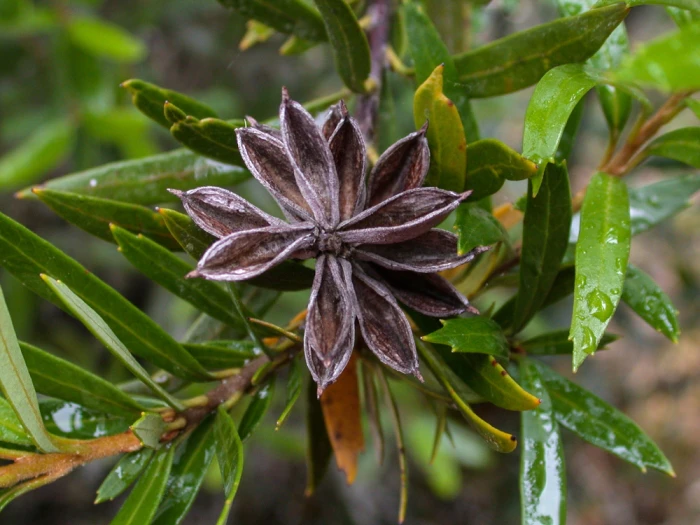Variable Orites
(Orites diversifolia)
Variable Orites (Orites diversifolia)
/
/

Melissa rose
CC BY-SA 4.0
Image By:
Melissa rose
Recorded By:
Copyright:
CC BY-SA 4.0
Copyright Notice:
Photo by: Melissa rose | License Type: CC BY-SA 4.0 | License URL: https://creativecommons.org/licenses/by-sa/4.0 | Uploader: Melissa rose | Publisher: Wikimedia Commons | Title: Orites_diversifolia_follicles.jpg | Notes: {{Information |Description={{es|1=([[Ornithogalum umbellatum ]], Ceuta, España}} |Source={{own}} |Author=[[User:Xemenendura|Xemenendura]] |Date=28-03-2010 |Permission= |other_versions= }} [[Category:Ornithogalum umbellatum]] [[Category:Nature of Ceuta]]





Estimated Native Range
Climate Requirements
| • Precipitation | 27" - 112" |
| • High Temp. | 59°F - 74°F |
| • Low Temp. | 28°F - 41°F |
Summary
Orites diversifolia, commonly known as Variable Orites, is an evergreen shrub native to the cool temperate rainforests, sclerophyll forests, and alpine areas of Southeastern Australia, particularly in Tasmania. It typically grows to a height of 4-6 feet (1.2-1.8 meters) and a width of 2-4 feet (0.6-1.2 meters). This plant features a dense, bushy habit with glossy, dark green leaves that vary in shape, hence the name ’Variable’. The cream-colored flowers bloom in spring and are modest in size but can be quite numerous, creating a pleasing display against the foliage. After flowering, small, woody capsules may form.
Variable Orites is valued for its attractive foliage and adaptability to a range of garden settings. It is often used in shaded garden beds, as an understory plant in woodland gardens, or for natural landscaping. The shrub is relatively low-maintenance, tolerating a variety of soil conditions, though it prefers well-drained soils. It is also suitable for planting in coastal areas due to its tolerance of salt spray. While it thrives in part shade to full shade, it can also adapt to full sun in cooler climates. Gardeners should be aware that Orites diversifolia may be susceptible to root rot in poorly drained soils and can be affected by leaf spot diseases.CC BY-SA 4.0
Variable Orites is valued for its attractive foliage and adaptability to a range of garden settings. It is often used in shaded garden beds, as an understory plant in woodland gardens, or for natural landscaping. The shrub is relatively low-maintenance, tolerating a variety of soil conditions, though it prefers well-drained soils. It is also suitable for planting in coastal areas due to its tolerance of salt spray. While it thrives in part shade to full shade, it can also adapt to full sun in cooler climates. Gardeners should be aware that Orites diversifolia may be susceptible to root rot in poorly drained soils and can be affected by leaf spot diseases.CC BY-SA 4.0
Plant Description
- Plant Type: Shrub
- Height: 4-6 feet
- Width: 2-4 feet
- Growth Rate: Moderate
- Flower Color: Cream
- Flowering Season: Spring
- Leaf Retention: Evergreen
Growth Requirements
- Sun: Part Shade, Full Shade
- Water: Medium, High
- Drainage: Medium
Common Uses
Border Plant, Low Maintenance, Potted Plant, Rock Garden
Natural Habitat
native to the cool temperate rainforests, sclerophyll forests, and alpine areas of Southeastern Australia, particularly in Tasmania
Other Names
Common Names: Silkwood
Scientific Names: Orites diversifolia
GBIF Accepted Name: Orites diversifolia R.Br.